How can I add a water feature to my garden?
5 ways to incorporate water into your garden

Co-Founder
Ruth Marshall
How can I add a water feature to a garden is one of the key questions we get asked. Water has an incredible effect in a garden, from stunning features enhancing the space and grabbing the eye, to the 3D soundscape all of its own- changing and echoing as you move around the space. Water can be an amazing draw for wildlife (to drink and bathe as well as live in it!) and an environment for a whole raft of plants that will not grow elsewhere.
A key consideration before starting to consider how you might add a water feature is how natural you would like your water feature to be- will it blend into the landscape or be a major focal point? Will it be a small feature that you happen across in a tour of the garden, or will the garden be designed around it? Here we highlight five creative options for bringing water into your garden.
1. Fabulous Fountains
Fountains may be traditional or more contemporary, and might be tiered or simple bowls, but most are used in more formal settings creating a good blast of noise and a striking feature to place as a key focal point or destination in a garden.
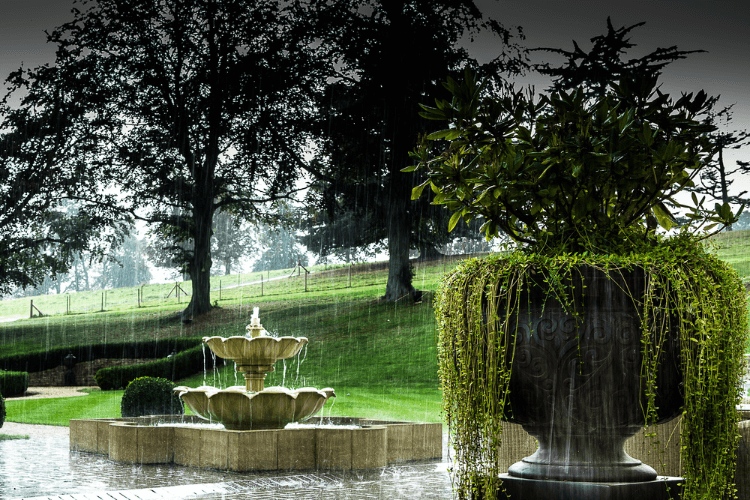
As the most classic type of water feature there are plenty of these available on-line, and some of the traditional suppliers (like Haddonstone, have a massive array or options for all sizes and styles of traditionl garden.
Alternatively, a more contemporary take can be achieved with a rendered formal pool and some well positioned jets, although it is the Espaliered Copper Beeches behind that really make this feature sing!
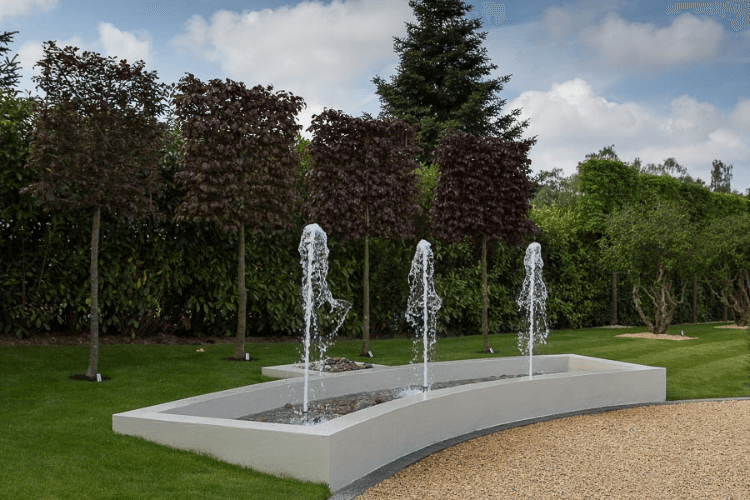
2: Can I have a natural stream?
Yes! These can be created very effectively using pumped systems as long as there is a bit of a slope that can be used- a slope can even be created on a flat plot if needs be although a rill might be a better option. The stream in the image below was designed and created by the award-winning CGLA team for a client who had always wanted a stream and thought that was not possible!
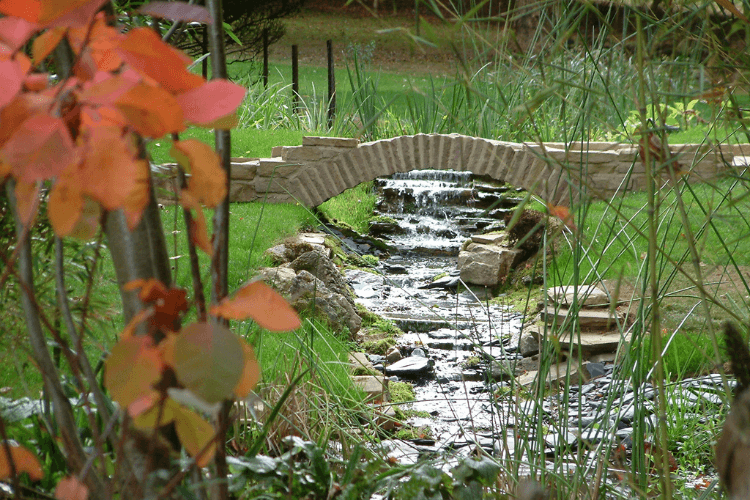
When I designed this feature I was conscious the whole illusion would be destroyed if you could see a liner – it needed to be entirely hidden. Details are also critical-here our team used a mix of three different sizes of pebbles and rocks to create the edges and base, and dressed in mossy rocks and wood scavenged from the clients’ woodlands to create the effect of something natural that has always been there”.
3: Extraordinary Lakes and ponds
CGLA friend and mentor, the renowned aquatic planting expert Graham Burgess, is apt to repeat “Nobody ever complained you made a pond too large”. He also cautions against designing using “wibbly wobbly shapes” in an attempt to look natural as most natural features form with sweeping curves instead. Alost perfect circles and ovals are good as in this example that repurposed an old rubbish tip for a CGLA client in Buckinghamshire.
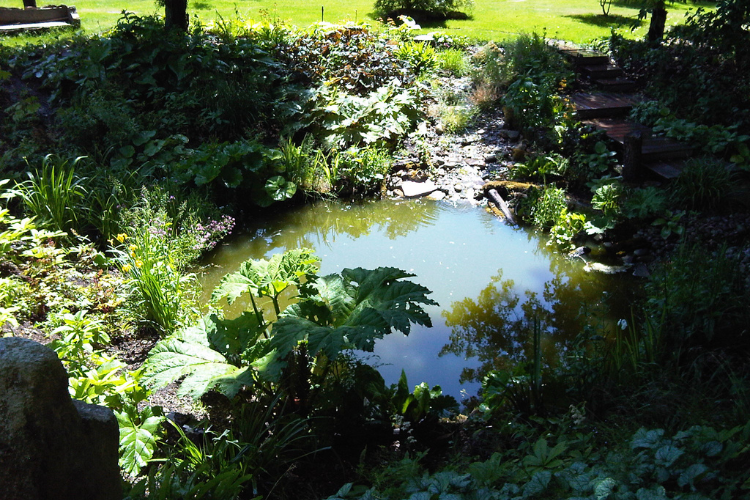
If you are planning to plant, the profile is critical- you must have some shallow margins to plant marginals, and to allow wildlife access, and ideally you should have planting shelves at different depths to accommodate different types of plants.
4: Formal ponds and Rills
A formal pond might be something for fish or for lilies. It can be a stunning centrepiece or focal point in a garden, creating striking geometry, amazing reflections, and directing the eye. In this example of a very traditional lily pond, in a contemporary setting, the pool itself is kept clear of everything apart from the lilies (and the duck house!), and planting around it is in formal blocks reflecting the shape of the pool.
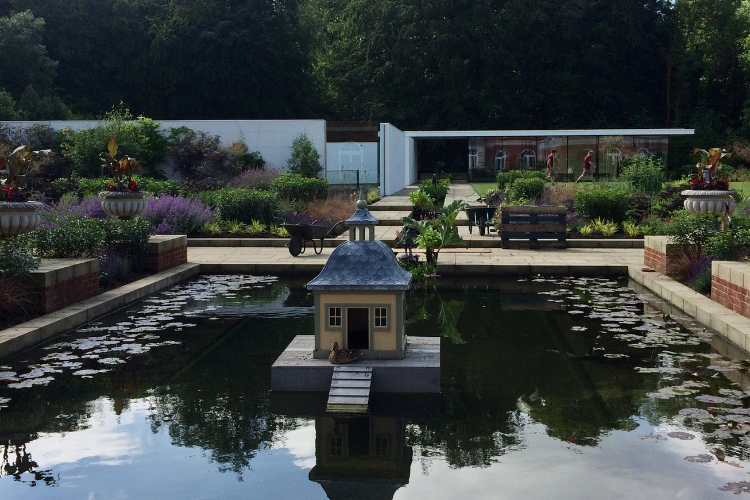
Rills usually refers to straight features set almost level, and there are many examples of these in classical and modern gardens. They can be more adventurous however, and these funky rills from the CGLA RHS gold medal winning garden use a playful and sculptural approach, set deep within planting and dropping into a formal pool. This fits beautifully into the CGLA Spa Garden featured here
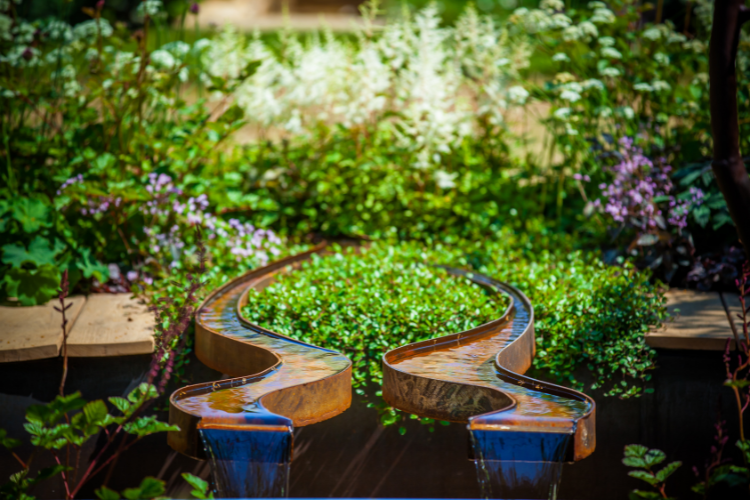
Key advice on ponds from Danny Price, senior CGLA Project Manager is “Do make sure you decide in advance whether you want to keep fish, add planting, and how you plan to keep the water clear. The design of the pond and its filtration systems is completely different between these options, and it may not be possible to switch once constructed. Safety is also a key consideration- do plan this up front as adding grilles or fencing later can be hard to do neatly and effectively”.
5: Sculptural pieces
Water features of all kinds can be sculptural pieces in their own right. In this stunning example, the stainless-steel fountain is surrounded with very precise jets mounted flush to the driveway surface so that the water itself creates sculptural shapes. (You can see more images of this garden here). This is a highly specialised and bespoke piece that was created in association with Bamber Wallis.
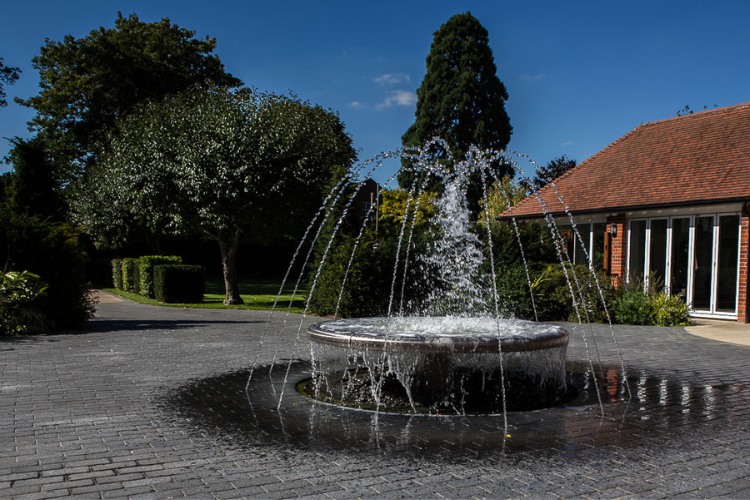
Simpler features can be bowls, water curtains, water tables and pots, all chosen to create a moving sculpture, and in most cases ‘plug and play’. There are a few companies that have a consistently good range such as Foras and at a slightly higher price point, Tristan Cockerill. Self-contained recirculating water features are great, usually just needing power and not mains water. This type of feature also often has the advantage of little or no standing water – making for child and animal safe spaces.
Embrace the magic of water, and let it enhance the beauty of your garden in a myriad of ways. The soundscape as you move around the garden, the movement, reflections, and the wildlife it will encourage to visit all mean this may be the best investment you ever make in your outside space! If you would like the help of the skilled creative team at CGLA to bring water into your garden, do get in touch
